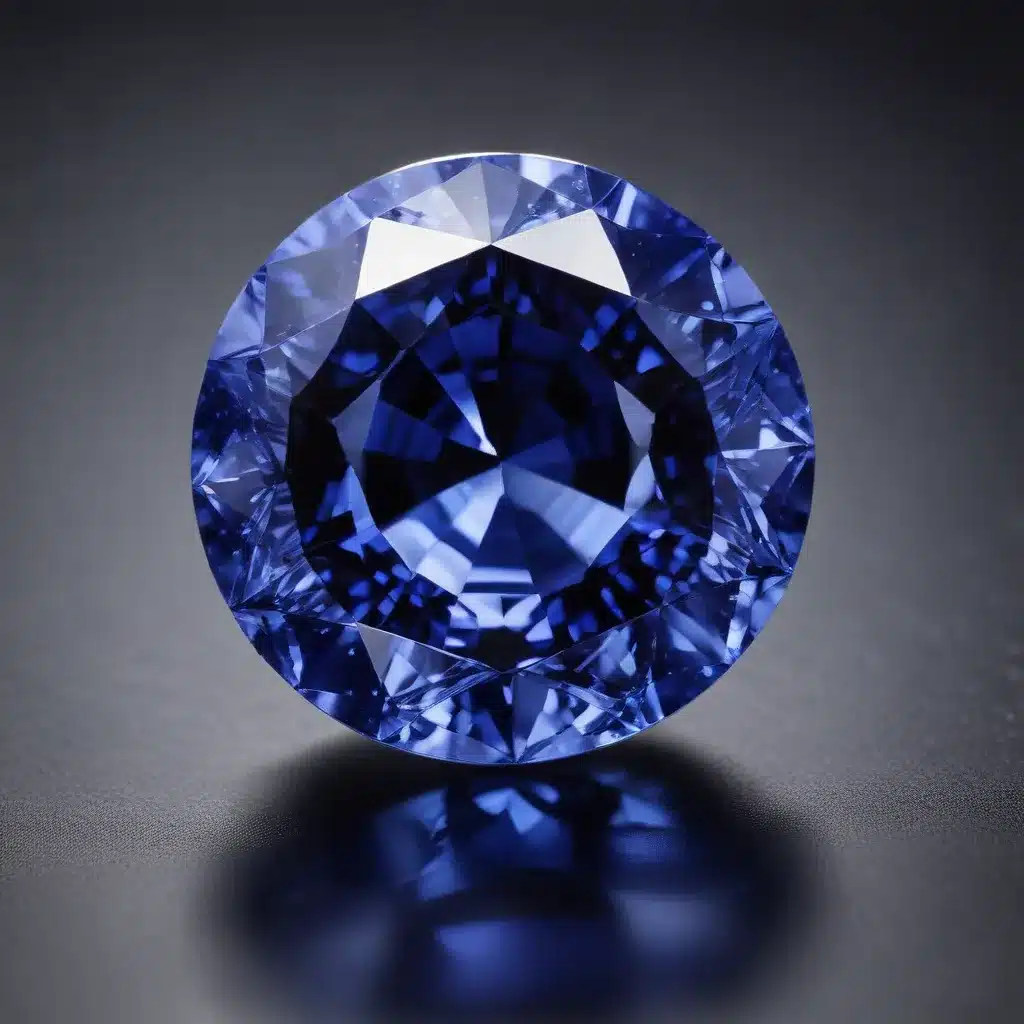
Synthetic sapphires are marvels of modern gemstone science, engineered to rival their natural counterparts in nearly every way. From their pristine chemical composition and flawless crystal structure to their captivating optical characteristics, these lab-grown gems represent the pinnacle of gemological innovation.
The Properties of Synthetic Sapphires
Synthetic sapphires are chemically identical to their natural cousins, composed primarily of aluminum oxide (Al₂O₃) with trace elements that dictate their color. The crystal structure of synthetic sapphires perfectly mimics the natural six-sided hexagonal form, down to the atomic level. This meticulous replication ensures synthetic sapphires exhibit the same remarkable hardness (9 on the Mohs scale) and exceptional durability as their mined counterparts.
The optical properties of synthetic sapphires are also a near-perfect match. Their refractive index, dispersion, and luster are virtually indistinguishable from natural sapphires, allowing them to captivate with the same mesmerizing brilliance and fire. Synthetic sapphires even share the natural stone’s enchanting fluorescence, glowing with a deep, rich color when exposed to ultraviolet light.
The Manufacturing Process
Crafting these gemological marvels requires specialized equipment and meticulous techniques. The most common method, flame fusion, was pioneered by Auguste Verneuil in the early 1900s. This process involves feeding a fine powder of aluminum oxide and color-imparting trace elements into a high-temperature oxyhydrogen flame, fusing the material into a teardrop-shaped boule.
Other techniques, like the flux method and hydrothermal synthesis, leverage different approaches to grow synthetic sapphires. The flux method dissolves the raw materials in a molten mixture, allowing crystals to slowly form, while hydrothermal synthesis mimics nature’s own gem-growing process by subjecting the ingredients to intense heat and pressure in a sealed vessel.
Applications and Uses
While synthetic sapphires excel as gemstones and jewelry, their applications extend far beyond the realm of adornment. Their unparalleled hardness, durability, and optical properties make them invaluable in a wide range of industrial and technological contexts. Synthetic sapphires serve as precision bearings in watches, abrasives for cutting and polishing tools, and even the substrates for LED lights and laser diodes.
When compared to natural sapphires, these lab-grown gems offer several distinct advantages. They are cost-effective to produce, consistent in quality, and environmentally sustainable, as their creation does not rely on resource-intensive mining operations. Though some may debate the “authenticity” of synthetic gems, their technical and practical merits are undeniable.
Challenges and Limitations
Replicating the natural appearance and unique characteristics of mined sapphires remains an ongoing challenge for synthetic gem producers. Achieving the same intricate inclusions, color zoning, and unique imperfections that lend natural stones their distinctive charm is a delicate balance. Scaling production to meet global demand while maintaining rigorous quality control also poses significant hurdles.
Regulatory and legal considerations further complicate the synthetic gem landscape. Ensuring accurate disclosure and authenticity of these lab-grown stones is crucial to maintain consumer trust and uphold industry standards. Gemological evaluations and certification programs play a vital role in this effort.
The History and Evolution
The pursuit of synthetic gemstone creation dates back centuries, with early pioneers like Edmond Frémy and Auguste Verneuil laying the groundwork in the late 1800s. Verneuil’s landmark flame fusion technique paved the way for affordable, mass-produced synthetic sapphires and rubies, revolutionizing the jewelry and industrial sectors.
As manufacturing methods evolved, the quality and versatility of synthetic sapphires continued to improve. The development of the flux method and hydrothermal synthesis broadened the scope of synthetic gem production, leading to a surge in demand and diversification of applications.
Today, the synthetic sapphire market is thriving, with manufacturers constantly refining their processes and innovating new use cases. From the dazzling display of a high-end engagement ring to the precision engineering of a cutting-edge laser device, the impact of these lab-grown gems is undeniable.
Quality Assurance and Certification
Ensuring the integrity and authenticity of synthetic sapphires is of paramount importance. Rigorous gemological testing and evaluation protocols are in place to identify the unique chemical, optical, and physical signatures of these lab-grown gems. Industry-recognized certification programs provide consumers with the assurance that their purchase meets the highest standards of quality and disclosure.
By upholding stringent quality controls and fostering transparency, the synthetic sapphire industry can continue to build trust and meet the evolving needs of both the jewelry and industrial sectors. As the technology behind these remarkable gems continues to advance, the future of synthetic sapphires shines ever brighter.
The Future of Synthetic Sapphires
The potential of synthetic sapphires is truly limitless. As technological innovations unlock new frontiers in crystal growth and processing, the boundaries of what these lab-grown gems can achieve will continue to expand. Emerging applications in fields like optoelectronics, aerospace engineering, and medical technology promise to drive further advancements and fuel growing global demand.
For the jewelry enthusiast, the allure of synthetic sapphires lies in their unparalleled consistency, affordability, and environmental sustainability. These lab-grown gems offer the chance to own a piece of gemstone perfection, untainted by the vagaries of nature and the constraints of scarcity. As the synthetic sapphire market matures, the selection and customization options for the discerning consumer will only grow more enticing.
Whether adorning the finger of a loved one or powering the next generation of high-tech innovations, synthetic sapphires stand as a testament to the ingenuity of the human spirit and the triumph of science over nature. The future of these captivating gems is, indeed, a brilliant one.

